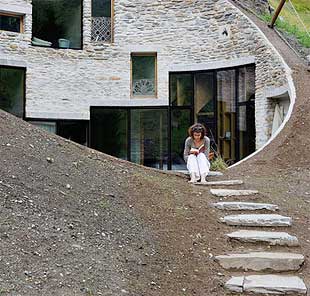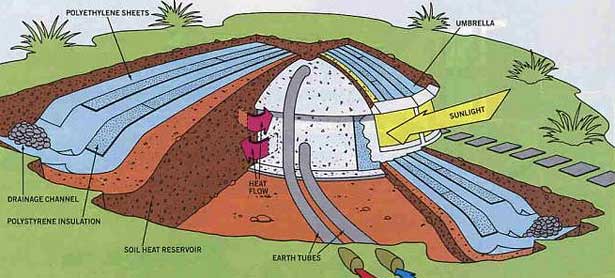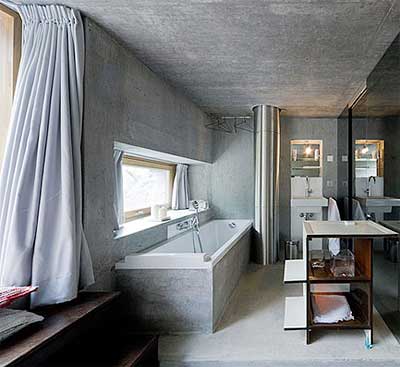Concrete Underground Homes
Concrete underground homes are one of the most proven ways to
provide yourself and your family with a sustainable home that
uses less energy from the electric grid. These structures usually
use less water from main sources, as well. Sometimes called earth
shelters, they are a popular type of building for eco-friendly
people.
|
Once an underground home is built, there
is not much maintenance needed, and the cooling and heating
costs are much lower than in a traditional, stick-built,
above-ground home. Underground homes also co-exist in harmony
with nature, and they blend in with the lay of the land.
|
 Concrete Underground Home
Concrete Underground Home |
Owners don't lose any green space when they live underground.
The roof can double as a play area or garden. As a rule, the land
atop these homes is not disturbed, so there is less of an impact
on the natural beauty of the area. Some owners also enjoy seeing
more wildlife and plants near their homes.
Save the Trees!
For the most part, you won't need any wood when you're building
a home underground. Most are made from concrete and rebar, along
with other materials that are strong enough to withstand the pressure
found underground. These homes conserve our valuable forests,
and they last longer than most traditional homes.
|
There is safety to be found, in
building underground. Hail, tornadoes or high winds will
not appreciably damage an underground home.
|
|
Even in an earthquake, the ground around the home will vibrate
less as it goes deeper, and the concrete foundations of these
homes are considered to be earthquake-resistant. In addition,
the exterior of these homes is made with metal studs and concrete,
which makes them fire-resistant.
The cost of living in an underground home is less over the long
run than the cost of living in conventional homes. Insurers have
discovered the innate resistance to natural disasters, and your
energy and maintenance costs are lower in an earth sheltered home.
Concrete Evidence ...
You won't have to worry about power outages in your home, or
freezing temperatures, either. The temperature in your home will
remain consistent even with the heat off. You'll find that the
temperature rarely will drop below 50 degrees F, even if you live
in a very cold area.
The reasons for the energy-independence of concrete underground
homes are multiple. Solar power allows you to collect solar heat
free during the summer months. You are also able to passively
heat the home in colder months, by using heat that is present
in the soil. The solar power that you collect all summer long
can be used to stay off the grid for many months of the year.
In addition, solar energy can power a ventilation system based
on convection, to warm your home in the winter, as well as cooling
it in the summer.

Many earth sheltered homes have been able to store all the heat
they need for a winter season. When their systems collect cooling
and heating energy, they can not only reduce your consumption
of energy, but they may also give you an energy surplus, which
you can use to run your ventilation and heat recovery systems,
and the heating of your water.
Conclusive Conclusion ...
There are many benefits to living in concrete underground homes,
and living as one with nature is only one of the most attractive
assets.
|




